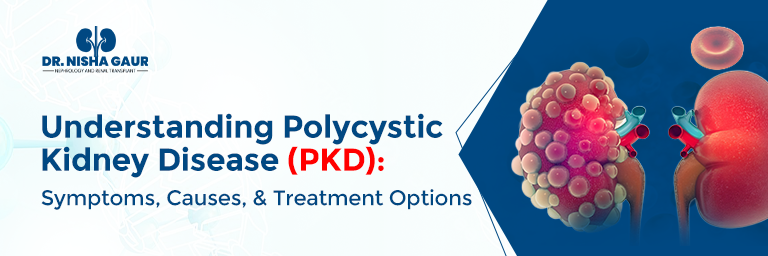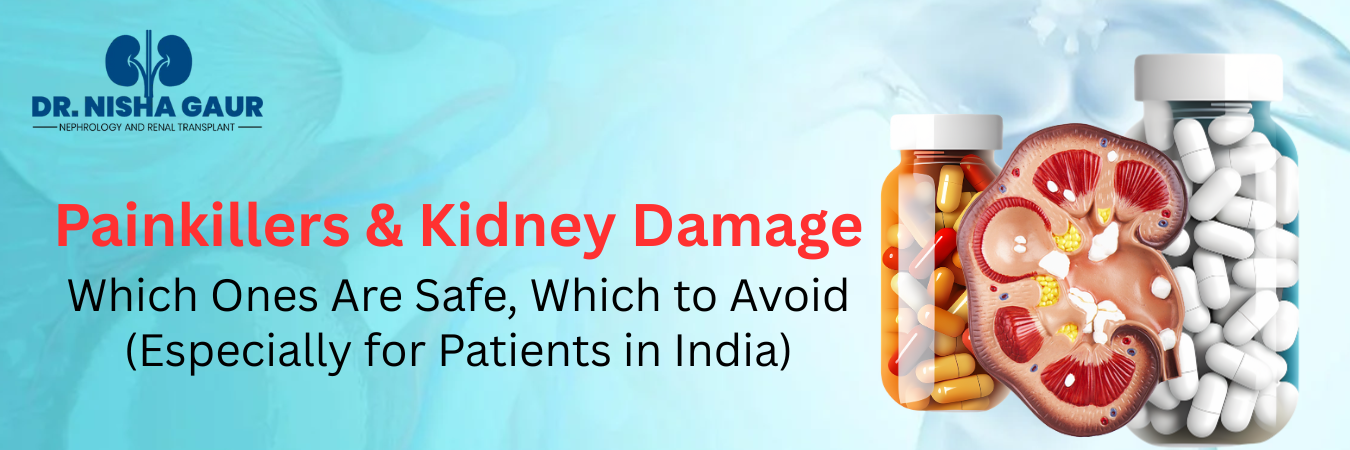The kidneys are tiny and yet very important organs that ensure the well-being of the body. They filter waste, calibrate fluids and blood pressure. And when anything goes wrong with them it presents itself to the whole body. Polycystic Kidney Disease (PKD) is one of them – a genetic disease that induces the development of clusters of fluid filled wombs called cysts, within kidneys.
PKD is not an ordinary kidney problem – it is a lifetime condition that may gradually worsen and damage the kidney. It is crucial to know about this disease as, in this form, it can be detected earlier, and serious complications will occur later. As renal health is increasingly growing as a concern on the global scale, education about Polycystic Kidney Disease, its pathogenesis, manifestations, and treatment may better assist patients and their families to cope with the condition in question.
Basics of Polycystic Kidney Disease
What is Polycystic Kidney Disease?
Polycystic Kidney Disease (PKD) is the kidney disorder genetically caused by the formation of cysts in the kidney. Such cysts are not cancerous, but upon their enlargement, they enlarged the kidneys and impaired their normal functioning. This may cause blood pressure which eventually develops kidney infections and in severe cases, complication of kidney failure, over a long period of time.
How PKD Differs from Other Kidney Diseases
In contrast to such common urinary tract diseases as a kidney stone or infection, Polycystic Kidney Disease is an inherited disorder. The issue begins at the gene level, not at lifestyle-level only. Although it can be aggravated by diet and the environment, PKD is an inherited condition.
Types of PKD
- Autosomal Dominant PKD (ADPKD): The most widespread type and is normally diagnosed during adulthood. There is a 50 percent risk of passing ADPKD in children whenever one of the parents has ADPKD.
- Autosomal Recessive PKD (ARPKD): Far less common and usually uncovered during early childhood. Symptoms can already appear at birth and may be diagnosed even in babies.
Who is at Risk?
The greatest risk factor for Polycystic Kidney Disease is family history. In the case that PKD historically runs in your family, then the likelihood is greater. Though lifestyle is not directly a factor to PKD, poor eating habits, smoking or uncontrolled blood pressure may cause the disease to progress at a faster rate.
Polycystic Kidney Disease Causes and Risk Factors
Genetic Mutations Behind PKD
PKD manifests because of malfunction in some genes. In ADPKD, it is frequently a genetic alteration within the PKD1 or PKD2 genes whereas ARPKD often involves alteration within the PKHD1 gene. These defective genes cause the abnormal growth of cysts.
The Family History and Inheritance Patterns
Each child is 50% likely to inherit ADPKD when only one parent has it. In ARPKD the child has to inherit the defective gene from both parents and is therefore less common but usually more severe.
Lifestyle and Environmental Triggers
Although Polycystic Kidney Disease is genetic, it can also be hastened by outside factors like:
- Large salt consumption
- Obesity
- Smoking and alcohol
- Uncontrolled blood pressure or diabetes
Signs and Symptoms of Polycystic Kidney Disease
Signs You Should Not Miss
- Headaches
- Back/side pain
- Blood in urine
- Frequent urination at night
Ordinary Symptoms in Adults
- High blood pressure (often the first sign)
- Enlarged abdomen due to enlarged kidneys
- Urinary tract infections (UTIs) and kidney stones
- Fatigue
Children and Infant Symptoms
- Rapid breathing
- Developmental delays
- In severe cases, kidney failure in ARPKD
Complications of PKD
If Polycystic Kidney Disease is left untreated, it can lead to:
- Enlargement and kidney pain
- High blood pressure (leading to stroke or heart attack)
- Kidney failure (requiring dialysis or transplant)
- Cysts in liver, pancreas, and spleen
- Vascular problems like brain aneurysms
Diagnosis of Polycystic Kidney Disease
- History and Physical Examination – family history, blood pressure checks
- Imaging Tests – Ultrasound, CT scan, MRI
- Genetic Testing – recommended for families with PKD history
- Lab Tests – urine and blood tests to assess kidney function
Treatment and Management of PKD
Is It Curable?
At this point of time, there is no cure of PKD permanently. Treatments are available that can slow the progression of, and help control, the symptoms. Consulting an experienced specialist like Dr. Nisha Gaur – Nephrologist in Jaipur can help patients manage the condition effectively.
Treatment Options
- Blood Pressure Control: Blood pressure control is achieved using medicines such as ACE inhibitors, or ARBs.
- Pain Management: Non-prescription pain relievers are a strong medication and should not be taken unless under prescription.
- Tolvaptan: A novel drug which is known to slow down the growth of cysts and maintain renal functioning.
Dialysis and Kidney Transplant
In severe cases when the kidneys fail to work, dialysis or kidney transplantation is the only remedy. Transplants are capable of reshaping the quality of life to a considerable degree.
Lifestyle Changes
- A low-salt diet must be followed
- Drink fluids but do not use excess caffeine
- Be of:loads much less than a healthy weight
- Exercise frequently
- Decrease stress with yoga, meditating or other low-impact activity
Prevention and Living with PKD
Is PKD Preventable?
PKD is hereditary and as such is not completely preventable. Nevertheless, the negative effects on the kidneys can be delayed by developing good lifestyle habits.
Tips on Blank
- Consume more vegetables and fruits and whole grains
- Restrict highly processed foods and sweetened beverages
- Do not smoke or take alcohol
- Check blood pressure at on Beijing Shidai Technology CO., LTD.
Psychological Health
Having a condition that lasts your whole life is a difficult process. Stress, anxiety and depression hinder many of patients. It helps to find support in family, counselors or through patient groups.
Support Groups
KD foundations and online communities give patients and families a place to describe their experiences and coping practices.
Research and Future Directions
- Scientists are developing high tech therapies:
- Stem Cell Therapy: There is the potential of stem cell therapy to compensate the use of kidney tissues.
- Gene Therapy: Treating the root cause could be done by repairing the faulty genes that cause PKD.
- New Drugs: Experimental drugs that better impact the growth of cysts are the focus of clinical study. These developments hold promise that PKD will be preventable, or even cureable one day.
Conclusion
PKD is a serious disease, however, having the knowledge or knowledge about it is the key to improving what we can do and to do it better. Important lessons are: PKD is an inherited disorder through which cysts of the kidneys occur.It usually has early symptoms which are normally silent hence early detection is crucial.Although it cannot be cured yet, it can be treated through blood pressure control, medication, lifestyle modification and, in extreme cases, transplants.Patients with the help of modern medicine and good support systems can have a meaningful life in spite of the PKD difficulties.
Frequently Asked Questions (FAQs)
1. How does the Polycystic Kidney Disease occur in simple words?
It is a form of genetic disorder in which fluid filled blisters (cysts) develop in the kidneys becoming larger and reducing the working capacity of the kidneys with time.
2. How does PKD run in a family?
In ADPKD, there is a 50 percent chance of a parent being affected passing the disease to a child. In ARPKD, the faulty gene has to be present in both parents.
3. What are initial signs of PKD?
Headache, hypertension, pain affecting the back, hematuria and increased urinary frequency.
4. Is cure permanent in a PKD?
However, it is not acute, although therapies can control seizures and lessen the pace at which the disease advances.
5. How long does it take to die with PKD?
Most of the patients have normal lifespans with early diagnosis and treatment.
6. Which are the foods to avoid in PKD?
Avoid high levels of salt, processed food, red meat, and high-sugar beverages.



